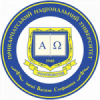Simulation of Gnosis: Which Doors Do "Keys of Mary" Open (On the Basis On the Novel "Keys of Mary" by A. Kurkov, Yu. Vynnychuk)
DOI:
https://doi.org/10.15330/jpnu.8.2.70-78Keywords:
gnosis, subculture, postmodern novel, pastiche, irony, intertextuality, genre, plot, composition, intrigue, chronotopeAbstract
Given article is the first study of the artistic features of the novel "Keys of Mary" since its publication. The article clarifies the difference between literary texts that attempt to provide answers to the philosophy of gnosis questions and those postmodern literature texts the authors of which use gnostic ideas to create the artistic world of the work while largely formalizing them. We consider it relevant to apply the concept of "gnosis simulation" for this group of works. The author argues that it was exactly the use of ideas and signs of this philosophical direction that made the basis for the plot and composition of "The Keys of Mary". "Simulation of gnosis" emphasizes the genre peculiarity of the novel defining it as a detective-adventure; it stimulates the reader's interest, because it serves as an intriguing factor. The work is modeled on the "cosmogony structure" principle: its bipolarity is manifested both in the division of characters and in the way the main conflict is resolved. Elements of gnosis, replicated at the subculture level, are successfully used to combine three storylines, three spatiotemporal dimensions. The focus point of the work is the image of the Maiden in her three novel incarnations (Maria, Aretha, Rina) – she is an eternally young savior of the mankind, whom the forces of evil hunt in all three of the "worlds". An interesting artistic discovery in the novel that draws reader attention is the plot of a lost historical chronicle about the knight Olgerd: in the narrative space of the work, it is perceived as a "supernova" that attracts the worlds of two time- distant plot orbits and creates a kind of insight on the last pages. Primarily, the authors of “The Keys of Mary” used the simulation of gnosis to model the plot, chronotope, and intrigue; but the values, deeply reflected in the legends and artifacts associated with the life of the Virgin Mary, prompt readers' need for self-determination.







